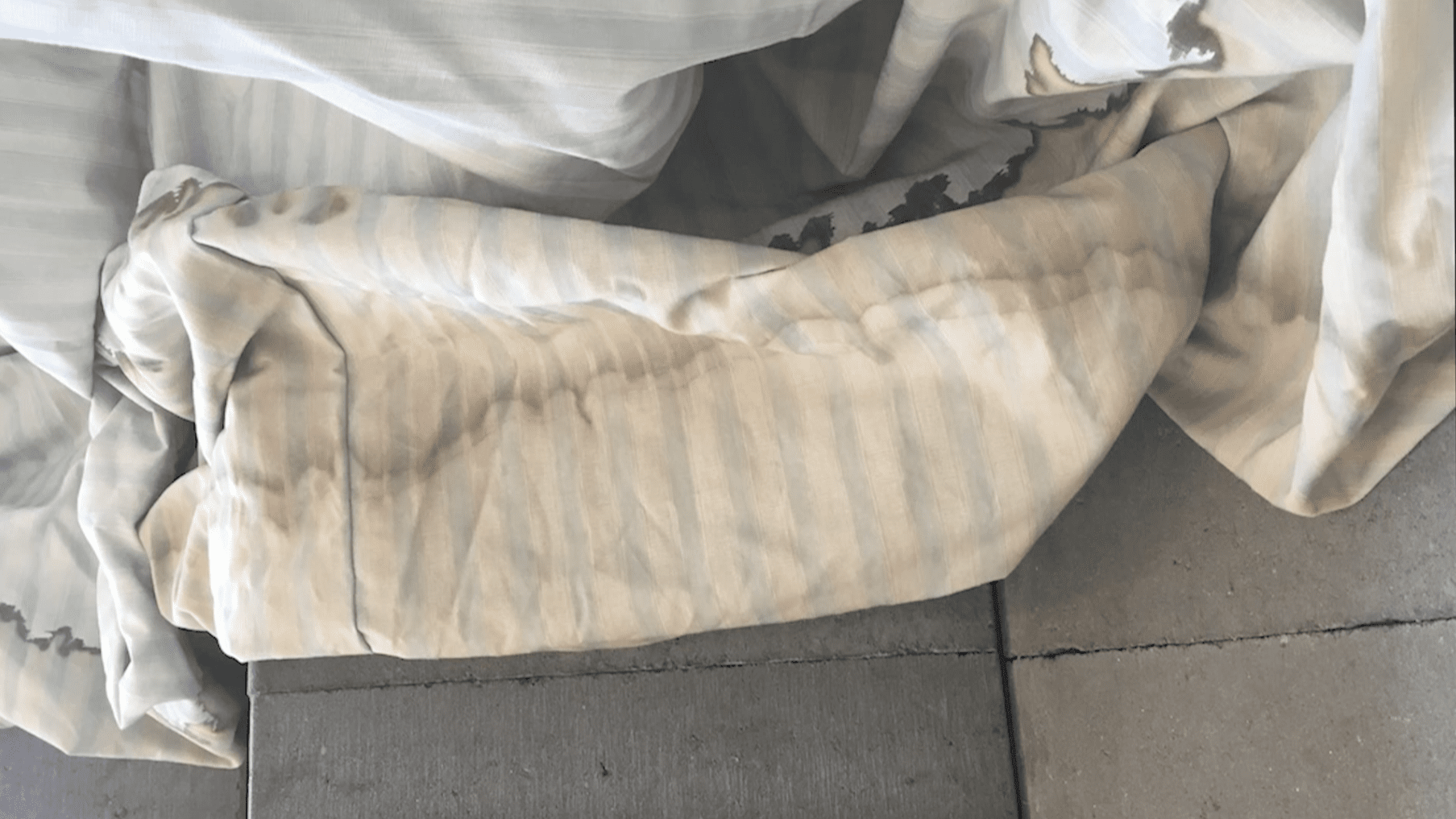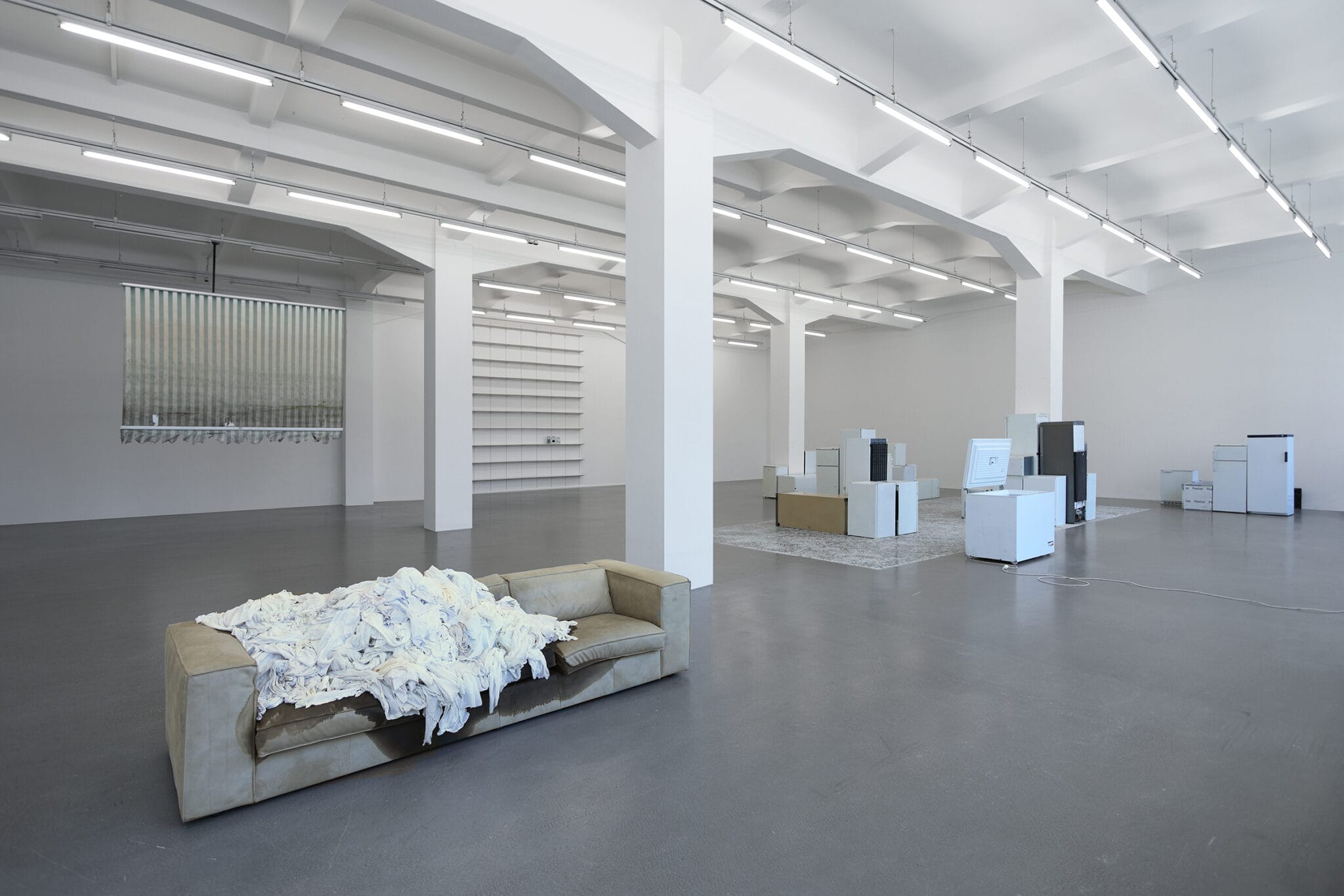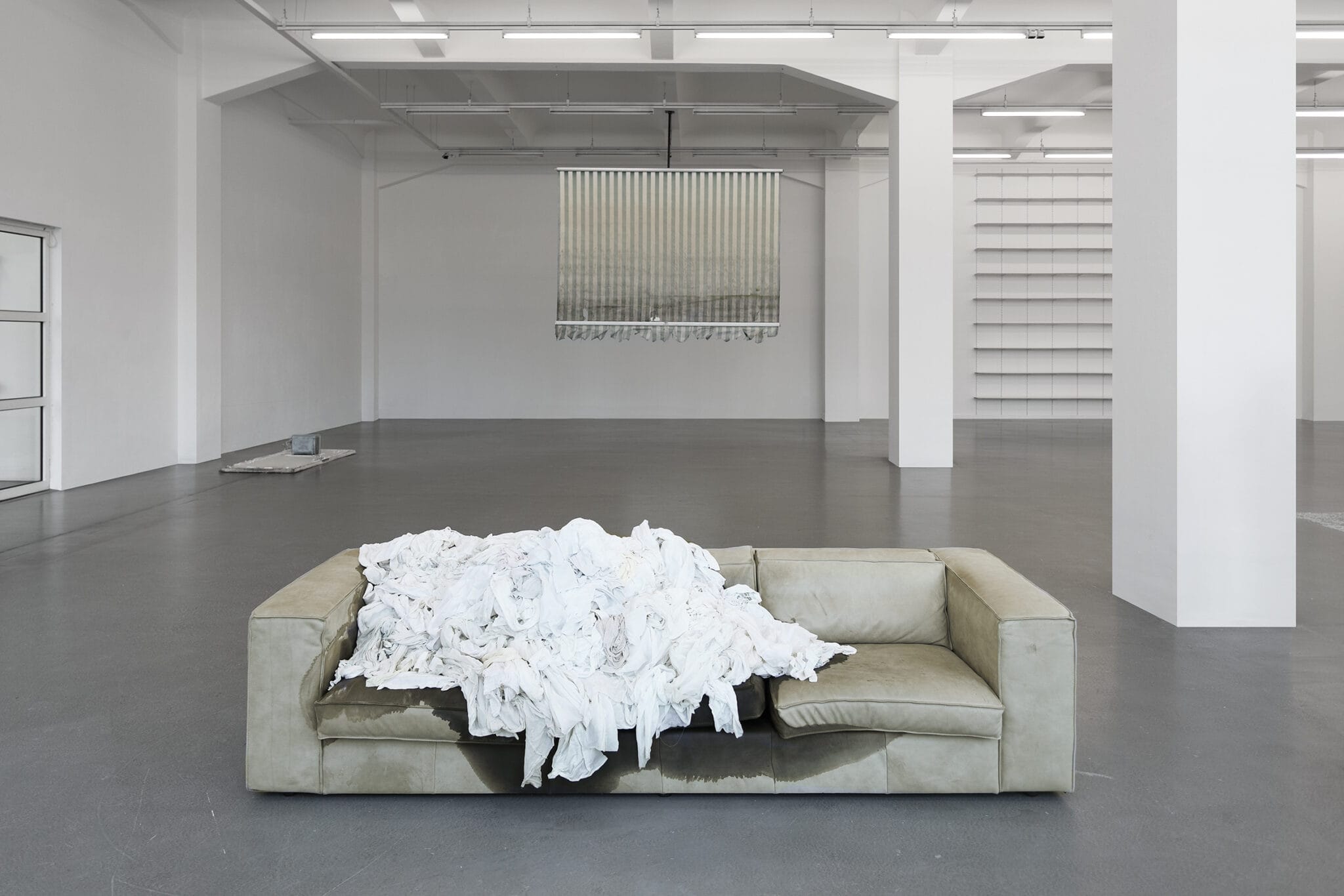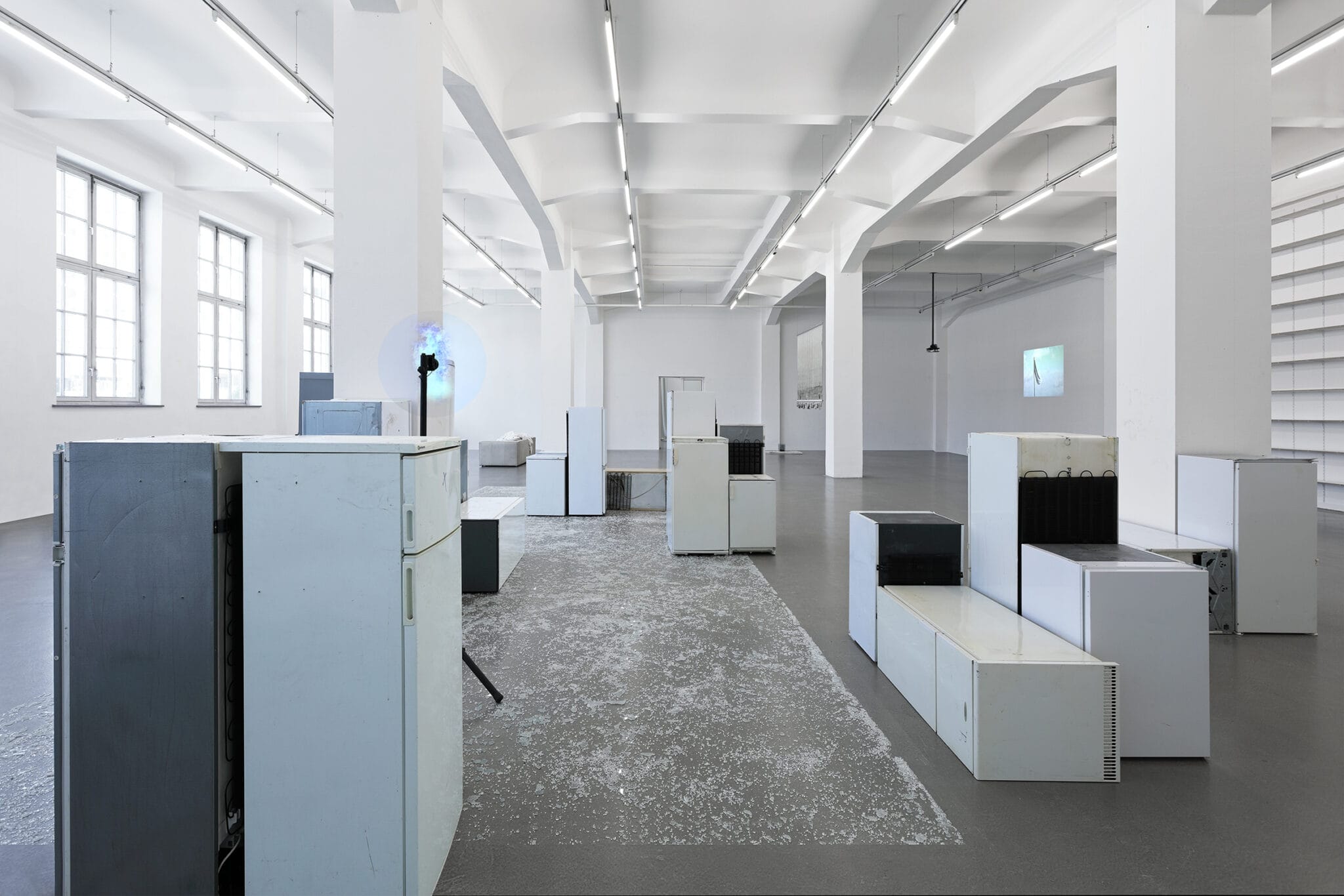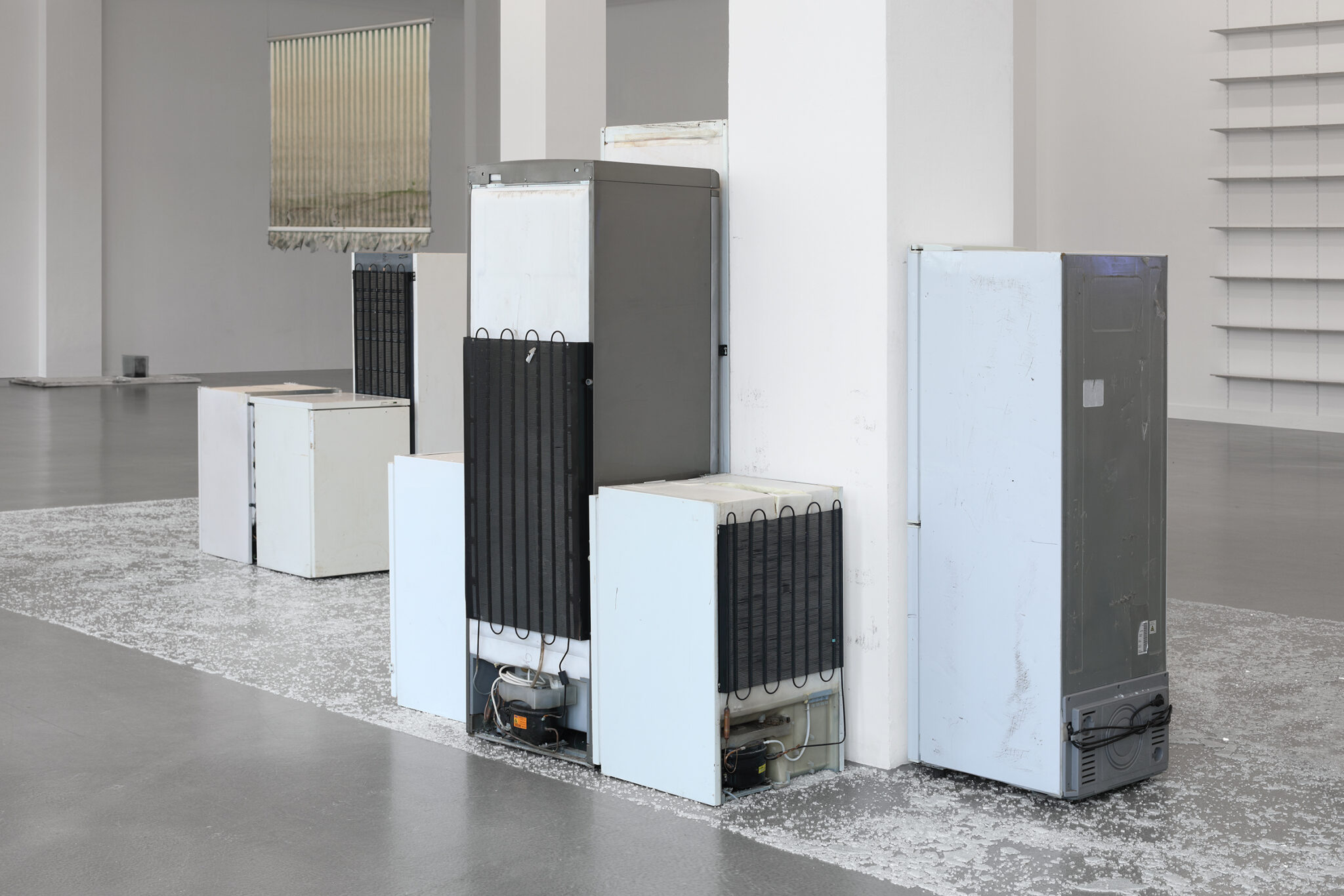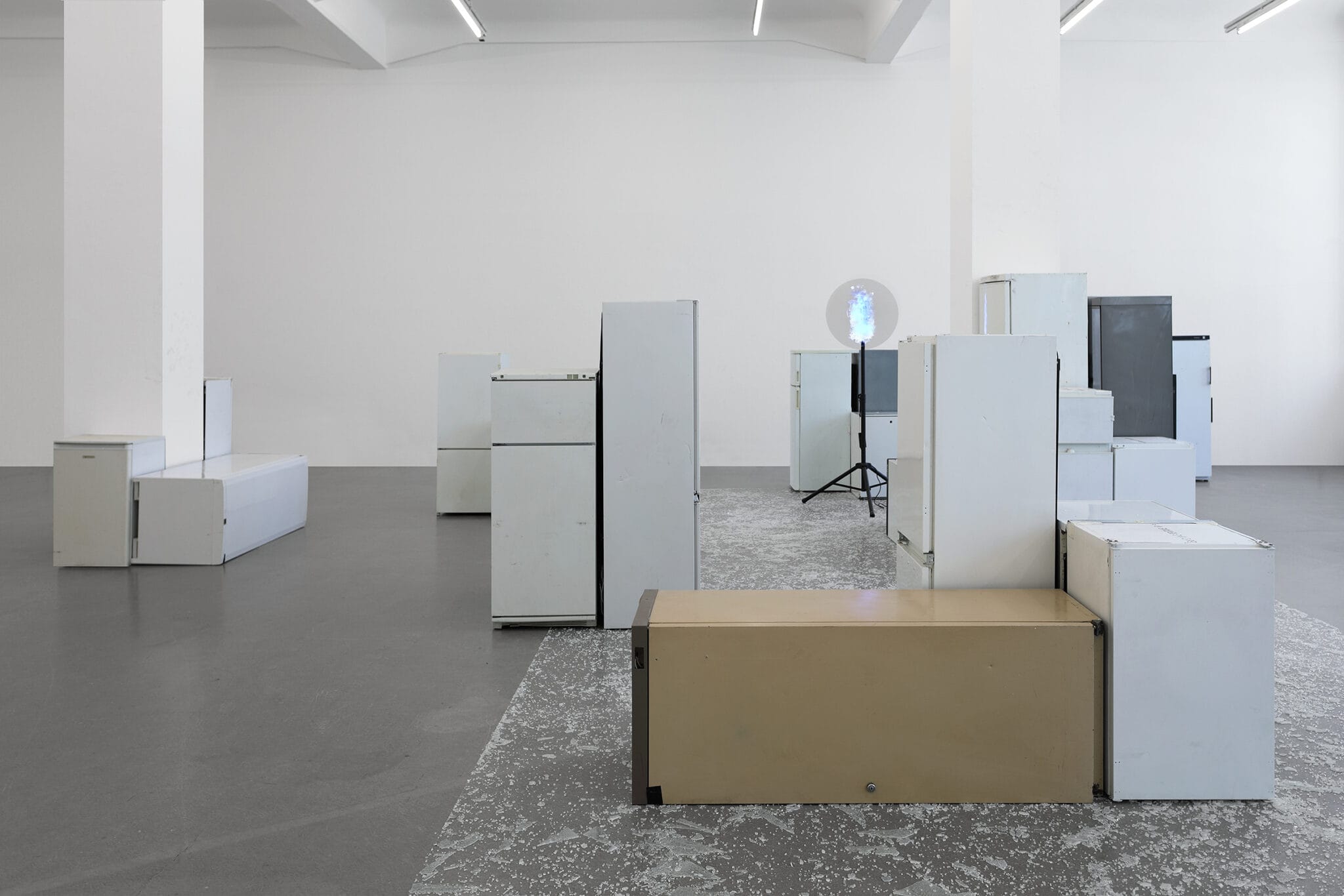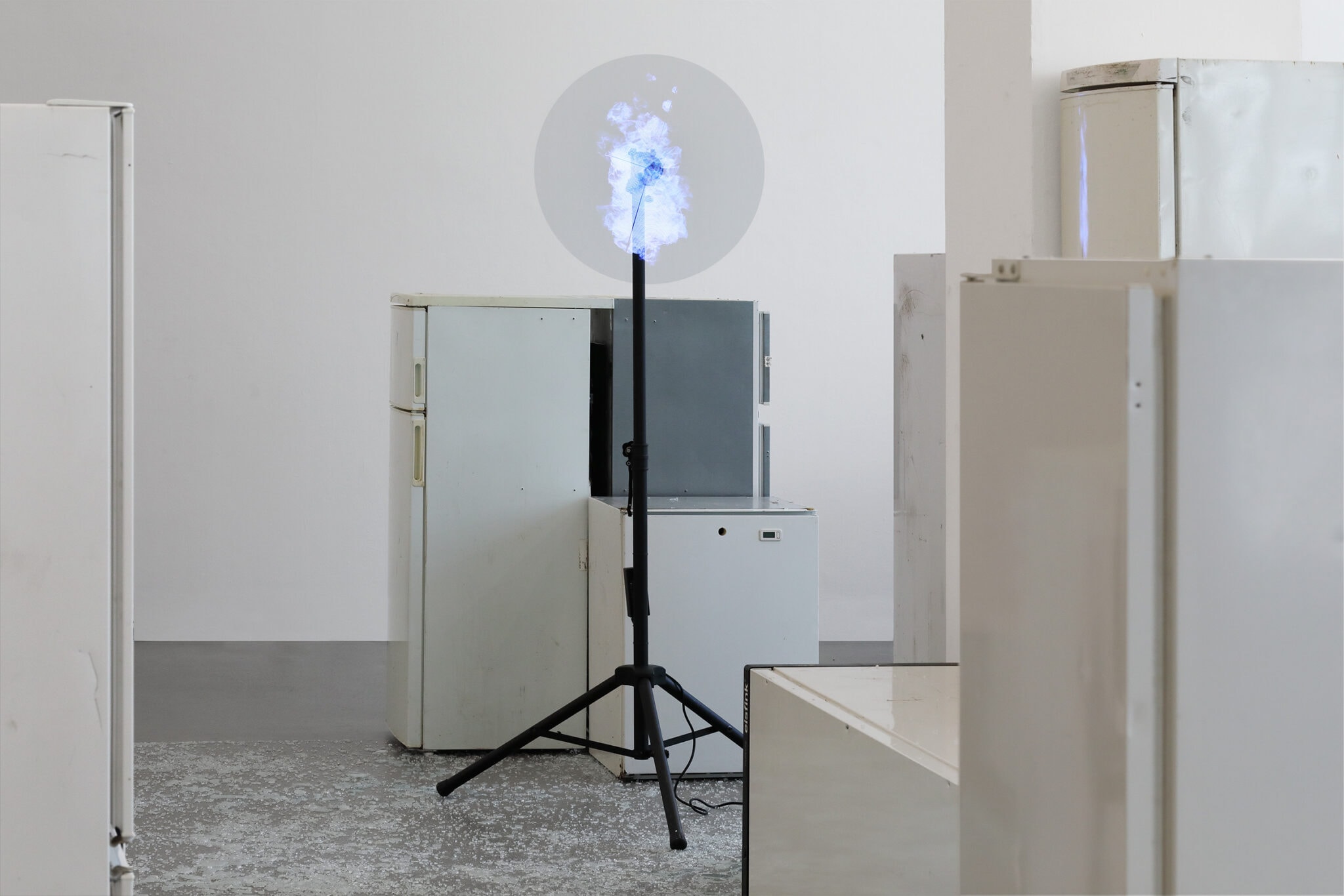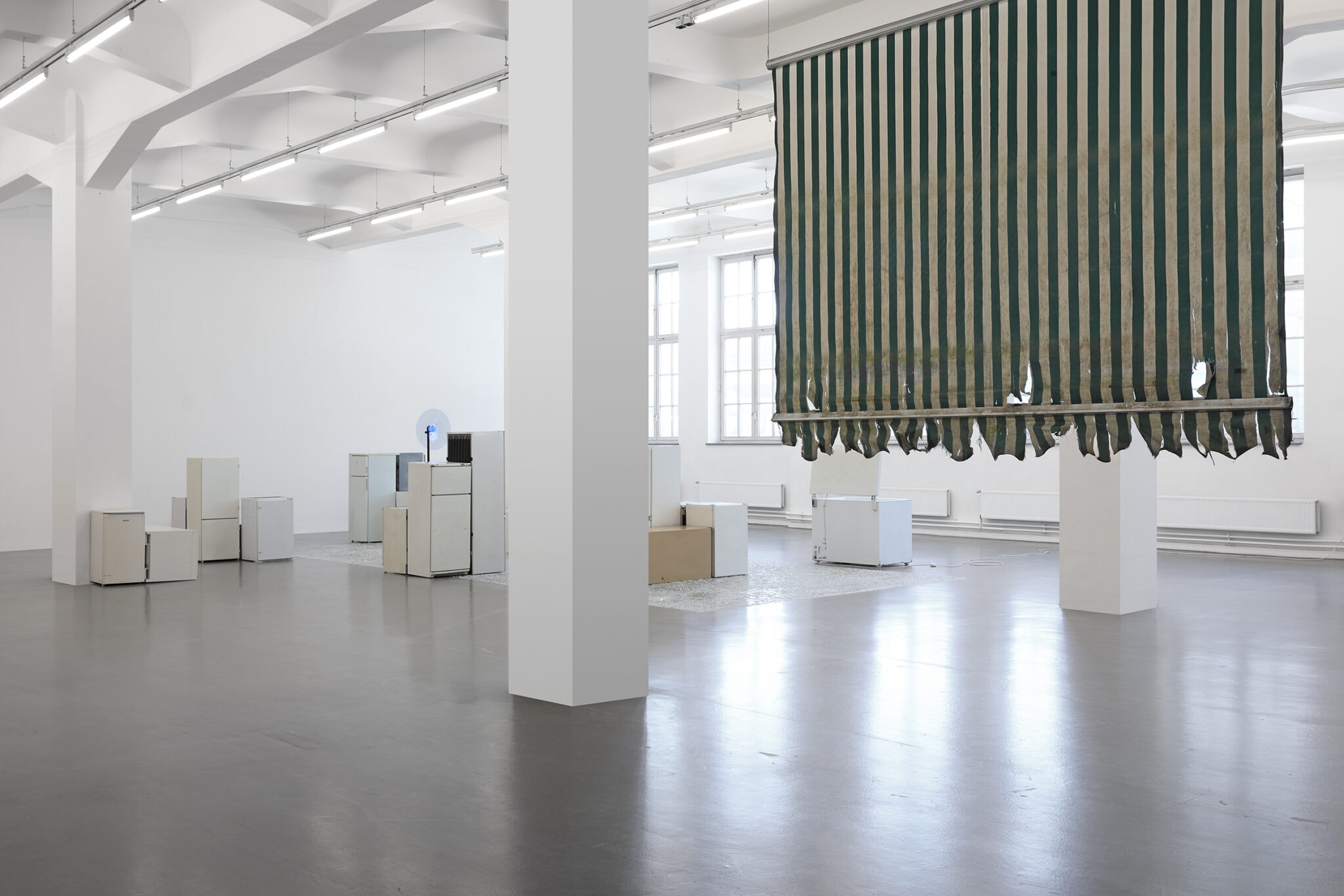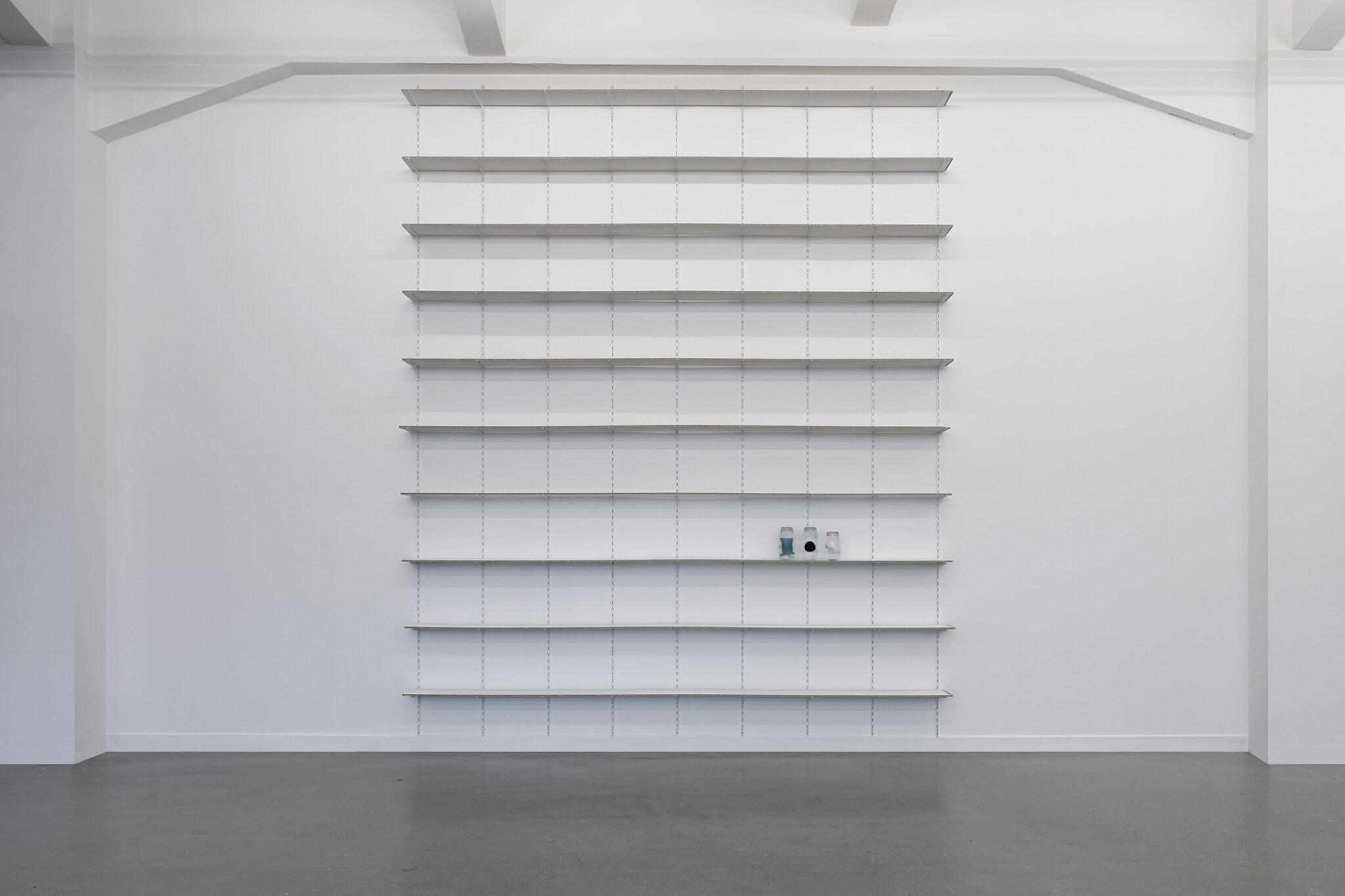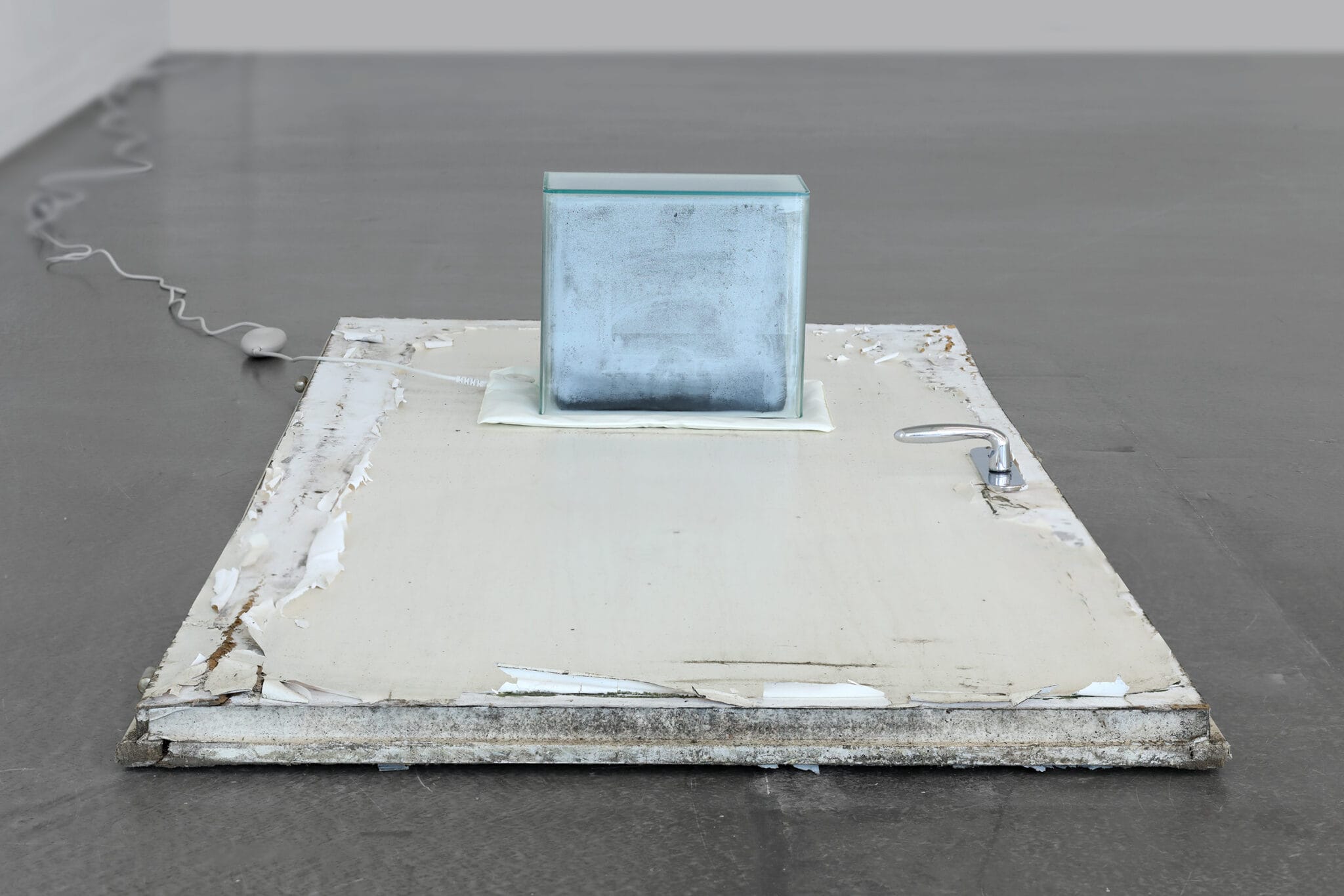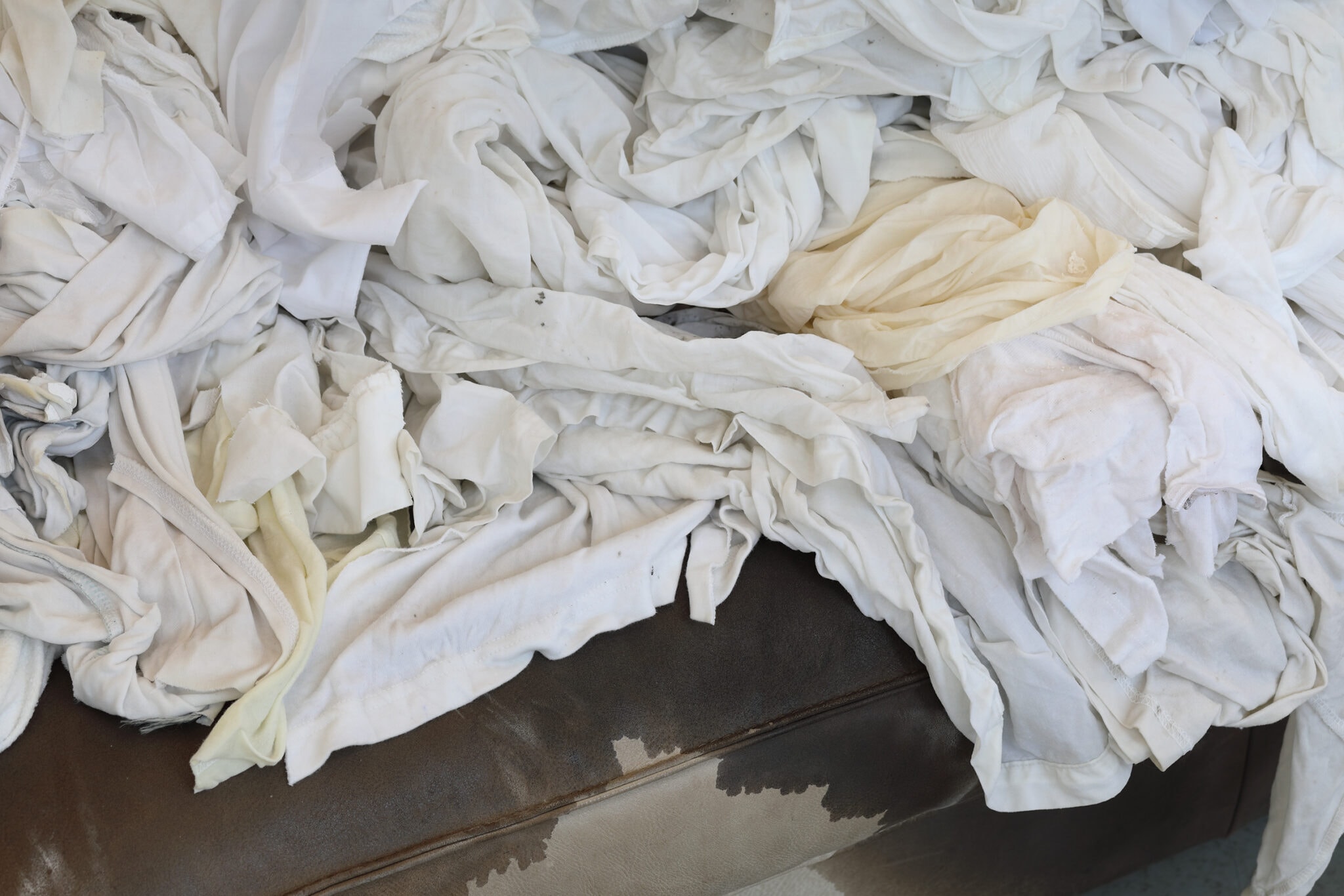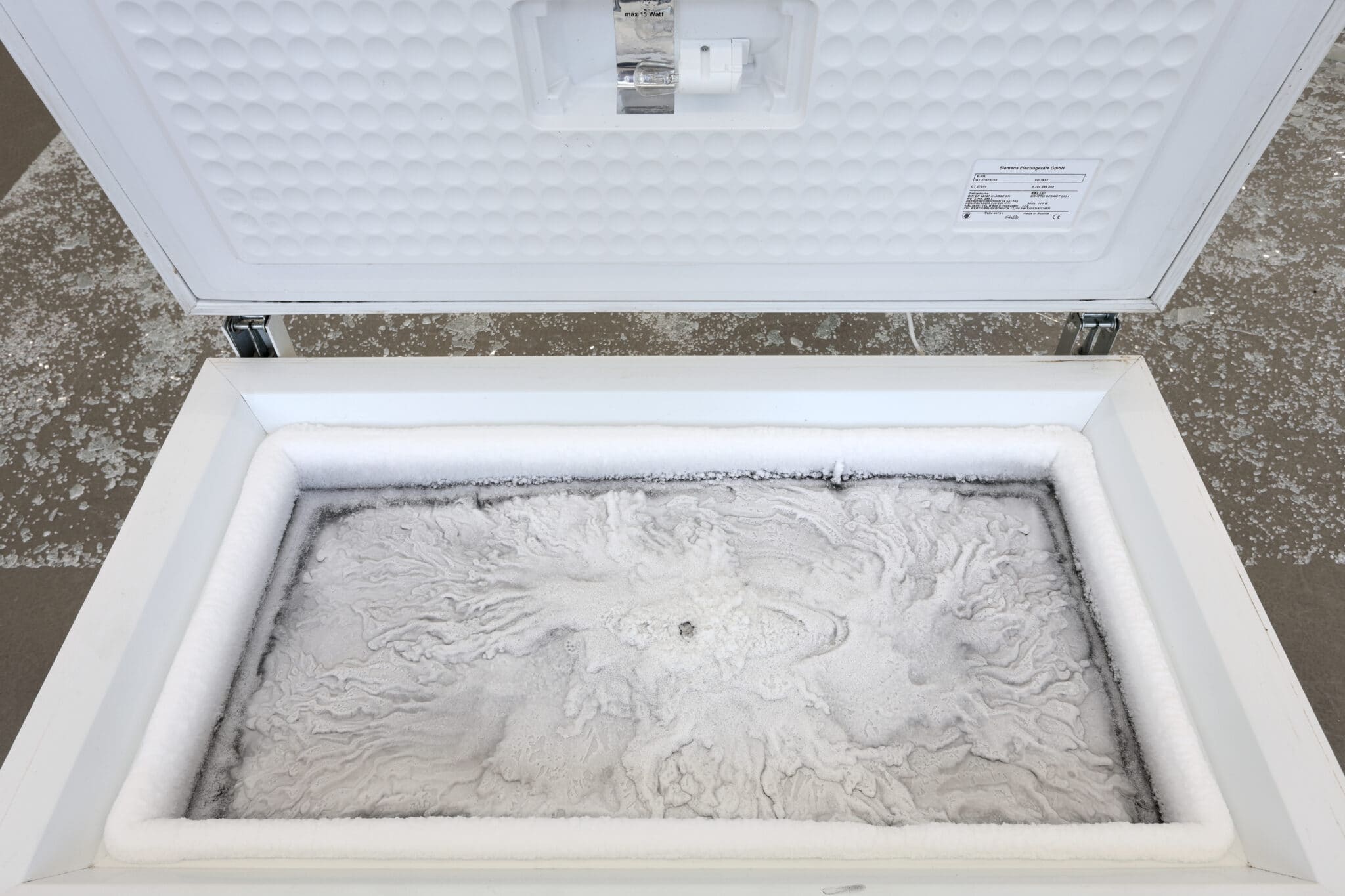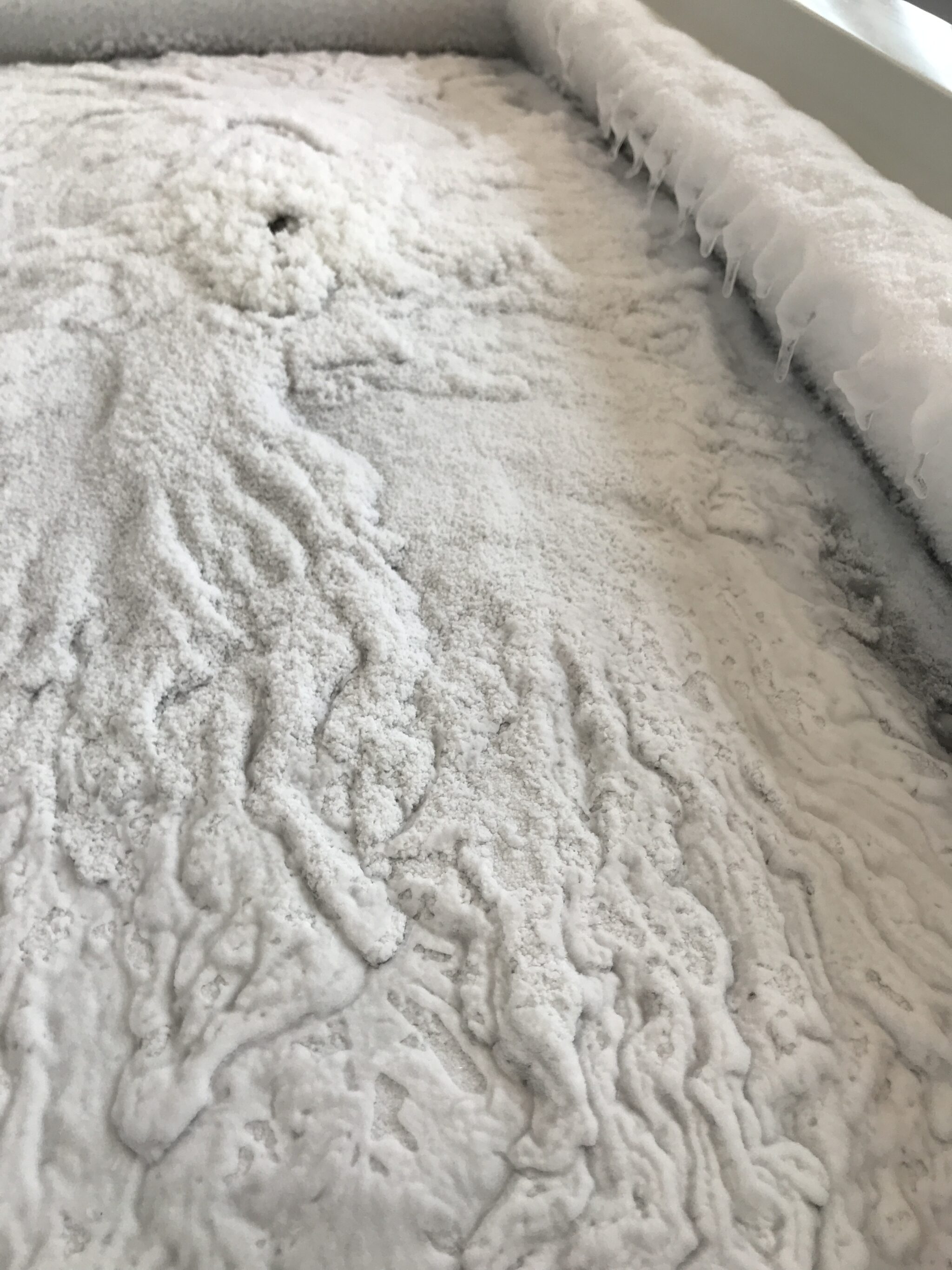Contrasting material characteristics and aggregate states of objects, images, and sounds, often drawn from everyday life, are consistent features of the artist’s work. Dekyndt links the various elements with one another through subtle interventions in a complex synesthetic field of references. She often uses ephemeral materials such as earth, liquids, salts, as well as fabrics in her works, making the silent ener- gies of natural transformation processes visible, or documenting the formative dynamics that she discovers in her environment in short video sequences.
In her installation The Black, The White, The Blue (2019), Edith Dekyndt makes reference to the international trade of goods as part of an economic utilization system that is generating enormous wealth in many societies but is globally defined by extreme inequali- ties. Thus, for example, discarded household appliances are amassed in containers and shipped from European ports to the most precari- ous regions in the world. In her work, Dekyndt symbolically groups scrapped refrigerators into an expansive spatial scenario in which the harshness of the economic cycle is reflected on multiple sensory levels. Through minimal interventions, the artist transforms the mainly sensitive materials by soaking these with ink, through accu- mulation, conservation, and with other methods. Above all, however, she chooses materials and objects that are in the state of dissolving, falling apart and decaying. With her minimalist visual aesthetic and the penetrating sound, Dekyndt creates an atmosphere that evokes brutality and fragility at the same time.
In the context of her installation, the painting Das Eismeer (The Sea of Ice, 1823–1824) by Caspar David Friedrich is an essential historical reference. The artist gave a component of her ensemble, a freezer filled with black water, the very title with which the collector Johann Gottlob von Quandt commissioned the painter Caspar David Friedrich in the early 19th century to create an ideal landscape of the North: Die Natur des Nordens in der ganzen Schönheit ihrer Schrecken (Northern Nature in the Whole of Her Terrifying Beauty). In the course of this commission, Friedrich produced his now famous Eismeer a few years later. Dekyndt‘s landscape of dysfunctional refrigerators, around which a carpet of shards of glass extends, can indeed be interpreted as a contemporary response to Friedrich‘s painting. The shattered hope in the 19th century that nature might be dominated is transposed in the installation The Black, The White, The Blue to the question of where the supposedly successful progress of the 21st century has taken us.
In her ensemble, Dekyndt strikes a further socio-critical chord with a sculpture consisting of a condensing glass case placed upon an old door lying on the floor. Like the used refrigerators, this discarded object was designated for transport to the global South. In the given context, the aesthetic of the work poses a stark contrast to its poetic title, which Dekyndt once again borrowed from the same his- torical source; for the commission to Friedrich was preceded in 1820 by a commission to the artist Johann Martin von Rohden, who was assigned to paint an ideal landscape of the South: Die südliche Natur in ihrer üppigen und majestätischen Pracht (Southern Nature in Her Abundant and Majestic Splendor).
In her engagement with the transformative aspects of mate- rials and objects, and her concentration on fragility and processes of dissolution, Dekyndt makes it clear that the definition of what is im- maculate or what is considered refuse (what is deemed clean and pure or dirty) is always a question of perspective and moral judgement. In her art, she always places human perceptual capabilities in a social and political context as well, in which the assumed neutrality of natu- ral phenomena stands in sharp opposition to how and for which pur- pose man appropriates these. Yet the defective refrigerators, which no longer have any commercial value in Europe, are nevertheless coveted commodities beyond this continent. They point to where morality on this side is at its end.
Katja Schroeder
Médium : Site-spécific installation, soundscape (Parkour performers jumping in the installation).
Dimension : variable.
Curator : Katja Schroeder
Exhibition places
-
Le Grand Café, Centre d'art d'intérêt national, Saint-Nazaire
14 February — 30 August 2020
Website -
Konrad Fischer Galerie, Düsseldorf
06 September — 19 October 2019
Website -
Kunsthaus, Hambourg
8 June — 4 August 2019
Website
